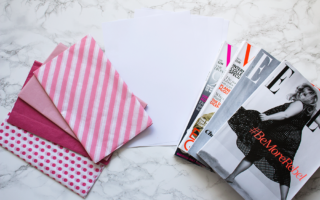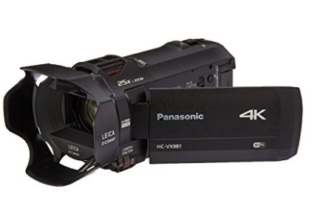We filled the list with a mix of new and vintage camera models based on the best camera for photography. Welcome to our guide to the finest cameras for beginners, where we’ve selected some of the starting cameras for anyone just getting introduced to photography or videography. Despite the fact that these cameras are all different, they all have a few things in common. They are simple to pick up and operate, they take amazing pictures, and they’re inexpensive. Still, if you require a professional vibe in photographs, choose the best Photo Editing Service provider who can serve you as you want.
Theme
Photography cameras, in the end, so much as what you or your gift receiver really like to photograph. Some cameras feature quick snap rates and focusing systems, making them a good choice for capturing fast-moving subjects such as sporting events and wildlife. Others feature big sensing with a huge number of pixels, making them a good choice for producing stunning reproductions. Also, there’s video — while almost all end-user cameras can now record video, some do it greater than others, with better clarity and quicker frame rates.
Types Of Best Camera For Beginners

A number of the best camera for beginners in this article are a range of types with varying performance, so you’ll be able to find what it is you’re searching for. All are easily accessible at a fair, application is user price, and in some contexts, we’ve included inexpensive choices for those on a set budget. Also, further enhancements of photos could be done by professionals for the best appearance. Do you intend you have more choices available? We also have a good hrm cameras guide that works at both expert and novice cameras, as well as a guide to the best devices for kids if you’ve been looking for a present for a child.
01. Canon PowerShot SX620 HS
Being a novice, a camera for photography that can be taken everywhere and slipped into a pocket is ideal, as getting your camera with you all the action is the quickest way of improving your photography skills. In that regard, the Canon PowerShot SX620 HS, which weighs only 182g and is a very good travel camera, is an ideal buy. The front-facing zoom lens has an equivalent focal range of 25-625mm, and since the lens-shift optical ground improvement system, which compensates for camera shake, it is more usable at the telescopic end.
Image Source: canon-asia.com
Individuals coming from a smartphone could be disappointed by the lack of a touchscreen, and the 1/2.3inch sensor is pretty much the same size as that found in a phone. If you want a reliable travel compact with a zoom lens that might cover a wide range of shooting environments, the upgrading is sensible, but don’t expect a significant boost in image quality.
Specifications
- Type: Compact
- Sensor: 1/2.3-in type
- Megapixels: 20.2MP
- Screen: 3.0-inch 922k, touch
- Viewfinder: No
- Lens (effective): 25-625mm
- Continuous shooting speed: 2.5fps
- Max video resolution: Full HD
02. Nikon D3500
As mirrorless cameras appear to be the technology of the future, many photographers still rely on DSLRs for the best professional photography. The Nikon D3500 is the greatest introductory DSLR on the market right now, with a high-quality APS-C sensor that offers quality photographs and a slew of helpful assist features to help you get started.
Image Source: nikon-aisa.com
The Nikon D3500 is a popular camera by many photography enthusiasts since it allows them to use Nikon’s F-mount lenses. While it comes to including an 18-55mm kit lens, depending on what you plan to photograph, we recommend upgrading as fast as possible to a more specialized lens. We could go on about how wide-angle lenses are terrific for landscapes and architecture, short telephoto lenses are great for portraits, normal prime lenses are great for all-purpose street photography, and so on. To rephrase, the Nikon D3500 is an excellent camera for any of these disciplines.
DSLRs, as previously explained, are not the most up-to-date shooting gear. As Nikon reorients its portfolio with its mirrorless Z series, it’s feasible that the Nikon D3500 may not only be the cool beginner’s Nikon DSLR, but also the last. It is, however, and always will be, a groovy beginner’s camera.
Specifications
- Type: DSLR
- Sensor: APS-C
- Megapixels: 24.2MP
- Screen: 3.0-inch, 921k, fixed
- Viewfinder: Pentamirror
- Lens mount: Nikon F
- Continuous shooting speed: 5fps
- Max video resolution: 1080p
03. Sony a6000
The A6000’s slimline form makes it easy to carry wherever, and the large selection of E-mount lenses makes it easy to create your own custom combination. It lacks a few functionalities that have become standard since 2014, its most significant of which is the lack of 4K video, something very few people will care about.
Image Source: sony-asia.com
The Sony A6000 is an oldie but a goodie, and there’s a reason why this series dominates the mid-range of cameras. The original Sony A6000, which was introduced in 2014, has a feature set that still seems competitive today, including 11fps burst shooting, a 24.3MP APS-C sensor, and a quick, accurate focusing system. It can handle pretty much everything most photographers need, and the fact that it’s the first in a popular series makes it an excellent place to start.
Specifications
- Type: Mirrorless
- Sensor: APS-C
- Megapixels: 24.3MP
- Screen: 3.0-inch, 921k, tilt
- Viewfinder: Electronic, 1,440k
- Lens mount: Sony E
- Continuous shooting speed: 11fps
- Max video resolution: Full HD
04. Panasonic Lumix G100
Only when you know you’ll like to record both stills and video and are not really sure where to start, the Panasonic Lumix G100 is a good resource. The G100 is a super-compact camera with a lean mass of only 412g and a slew of attractive attributes. It captures stunning 4K/30p video and exceptional 20MP stills, and because of the Micro Four Thirds mount, there are a plethora of lenses available.
Image Source: rtings.com
The mechanism also gets high marks for being user-friendly; for example, to start recording, you hit the huge red button. The adjustable Fn buttons facilitate you to try out different parameters, and the touchscreen is both dynamic and user-friendly. Panasonic has also paired with Nokia to provide the camera with OZO audio, a multi-mic advanced technology that improves the camera’s onboard recordings. This alone qualifies it as an ideal vlogging beginner camera.
Specifications
- Type: CSC
- Sensor: Micro Four Thirds
- Megapixels: 20.3MP
- Screen: 3-inch vari-angle touchscreen, 1,840,000 dots
- Viewfinder: Electronic 3,690k
- Lens mount: Micro Four Thirds
- Continuous shooting speed: 10fps (electronic shutter) and, 6fps (mechanical shutter)
- Max video resolution: 4K
05. Panasonic LUMIX DMC-TZ100
The Panasonic TZ100 has shown a lot of features and specs from that little camera. It has a 20.1MP 1.0-type sensor, and this is physically huge for a small device and produces remarkably noise-free images although at high ISO settings. It also has an electronic viewfinder and a high-resolution 3.0-inch back screen, as well as a 10x zoom lens with a 25-250mm effective range.
Image Source: amateurphotographer.co.uk
There’s optical image stabilization for photos and a 5-axis hybrid stabilizer for video shooting to keep things smooth. You can also snap stills and video in 4k UHD at a 30fps frame rate. The burst rate of 10fps is still fast enough for full-resolution photography.
Specifications
- Type: Compact
- Sensor: 1.0-type
- Megapixels: 20.1MP
- Screen: 3.0-inch 1,240k, touch
- Viewfinder: Electronic, 1,166kLens (effective): 25-250mm
- Continuous shooting speed: 10fps (4k 30fps)
- Max video resolution: 4k
06. Fujifilm X-T30 II
It just is our most expensive beginner’s digicam also could be the best beginner camera, and it may be out of your average price. However, if you can finance the Fujifilm X-T30 II, you’ll be rewarded with a superb camera that’s a joy to have and delivers brilliant photographs with minimal post-production. It, like the greater part of Fuji X cameras, has a dial-based physical controller that harkens back to the old days of film cameras, and it’s a lot more fun than wrangling with digital menus.
Image Source: fujifilm-dsc.com
The main benefit of Fujifilm cameras is that they shoot superb-looking JPEGs and have plenty of brightness and color, as well as the flexibility of using one of Fujifilm’s excellent Film Simulation functions for a truly classic design. This is a nice camera to choose if you wouldn’t like to spend a lot of time editing pictures on a computer.
Specifications
- Type: Mirrorless
- Sensor: APS-C
- Megapixels: 26.1MP
- Screen: 3.50nch, 1,620k tilting touch
- Viewfinder: Electronic, 2,360k
- Lens mount: Fujifilm X
- Continuous shooting speed: Check out 8fps mechanical shutter (20fps electronic shutter)
- Max video resolution: 4K
07. Polaroid Now+
The Polaroid Now+ is among the most recent edition in Polaroid’s continued success story. These modernized instant cameras unite the best of both worlds, generating rapid film prints with all the lo-fi charm you recognize from the past while still enabling you to access a wealth of cutting-edge qualities via smartphone connectivity.
Image Source: amazon.com
Obviously, the images are stunning. They’re not supposed to win any awards for high performance, and that was not the objective of Polaroid in the first place. They just ooze retro style, and the image quality is far greater than Fujifilm’s Instax cameras. However, this does indicate that they are more expensive to buy. The Polaroid Now+’s sole big disadvantage is that it requires you to financial plan for continuing film costs.
Specifications
- Type: Instant print camera
- Format: Polaroid i-Type film, Polaroid 600 film
- Screen: No
- Viewfinder: Optical
- Lens (effective): 2-lens system; standard lens 102.35mm and, (40mm full-frame equivalent), close-up lens 94.96mm (35mm equivalent)
- Flash: Yes
- Connectivity: None
08. Sony ZV-E10
The control layout also gets important credit as being user-friendly; for example, you can start filming by tapping the big red button. The adjustable Fn buttons inspire a user to try out new settings, while the touchscreen is also multifunctional and user-friendly. Panasonic has also cooperated with Nokia to give the camera OZO audio, a multi-mic technology that improves the camera’s onboard audio recording. This alone qualifies it as an excellent vlogging camera.
Image Source: gadgets.ndtv.com
This isn’t suited for photography from an ergonomic viewpoint. There’s no viewfinder on the back, and there’s no function dial on the back for swiftly changing modes, which is more prevalent in stills than video. That isn’t to mean it isn’t useful for stills; a smartphone isn’t made for photography, and most of us cope just fine. However, if you’re mainly concerned about stills, you’d be better off heading somewhere else.
Specifications
- Type: Mirrorless
- Sensor: APS-C
- Megapixels: 24.2MP
- Screen: 3.0-inch, 922k, vari-angle
- Viewfinder: No
- Lens mount: Sony E
- Continuous shooting speed: 11fps
- Max video resolution: 4K
09. Olympus OM-D E-M10 Mk IV
The E-M10 Mark IV is its fourth iteration of Olympus’ incredibly successful line of travel-friendly mirrorless cameras, and it’s a tremendous addition. It’s a terrific entry point into mirrorless cameras, lightweight enough to carry along but with a surprising series of complex capabilities – a worthy addition to such a list of the best cameras for beginners. It has a large in-body consolidation mechanism that makes shooting handheld in low light better, as well as a number of assistive shooting modes that help new folks acquire their bearings.
Image Source: pcmag.com
The 4K video features and flip-around screen make it perfect for vlogging, while the lack of a microphone input is a limitation. Some people may be put off by the plastic composition, as opposed to the metal alloys found in more expensive cameras. If that doesn’t bother thinking you, this is an excellent first step when looking for a travel camera for a rookie.
Specifications
- Type: CSC
- Sensor: Four Thirds
- Megapixels: 20.3MP
- Screen: 3.0-inch 1,037k tilting (180°) touch
- Viewfinder: Electronic 2,360k OLED
- Lens mount: Micro Four Thirds
- Continuous shooting speed: 8.6fps
- Max video resolution: 4k
10. Canon EOS 250D
The Canon EOS 250D is the first entry-level DSLR with 4K video capture, and it replaces Canon’s popular EOS 200D. Indeed, the camera’s predecessor’s Dual Pixel CMOS autofocus system for live view and movie modes makes it particularly adept for tracking activity when taking video. The 18-55mm kit lens’s near-silent AF performance is an added plus. Along with it, you can also consider on the blog photography it means how you can take a photo of a blog for your advertisement
Image Source: canon.co.uk
The 250D is a capable stills package, not simply for video. With optional Guided User Interface and Creative Assist modes that interact perfectly with the fully articulated touchscreen, it’s ideal for beginners. Canon’s outstanding Quick menu provides easy and rapid access to critical settings, so the camera can develop with you as you master new abilities and methods.
Specifications
- Type: DSLR
- Sensor: APS-C
- Megapixels: 24.1MP
- Screen: 3.0-inch, 1,040k, pivot, touch
- Viewfinder: Pentamirror
- Lens mount: Canon EF
- Continuous shooting speed: 5fps
- Max video resolution: 4K
Conclusion
This guide will help you narrow down your search for the ideal Christmas present for a budding photographer not the best camera in the world. There are a variety of camera types, all of which are featured on this list, but as a rookie, you may not be familiar with the differences between DSLRs, compacts, and mirrorless cameras. If that’s the case, don’t worry: you can skip straight to our easy-to-understand guide to what to look for when choosing a camera for beginners, where we go over the fundamentals of the various types as well as their individual benefits and drawbacks.



